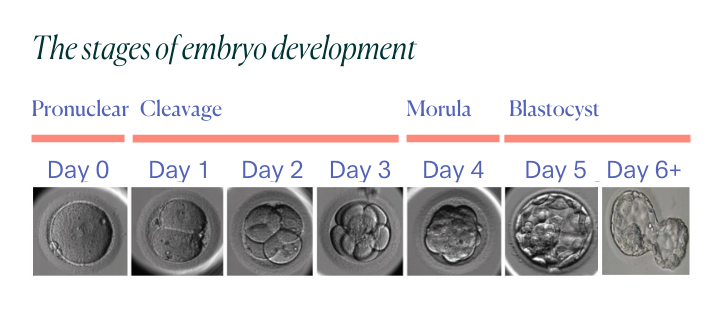

Normal symptoms after embryo transfer Absence of menstruation However, it will not be known whether this increased urinary activity is due to an actual pregnancy or to the additional injections the woman is having. One of the side effects of hCG is the increased urge to urinate. This hormone increases in blood and urine shortly after embryo implantation, so the determination of hCG is essential to confirm pregnancy. In a natural pregnancy, hCG is produced by the embryo's gestational sac and helps maintain and progress gestation. Many women undergoing assisted reproduction treatment are injected with the hormone hCG, the pregnancy hormone. Hence, not suffering from nausea after an embryo transfer does not indicate treatment failure. However, it should be noted that not all women who become pregnant and not all women who have undergone assisted reproduction treatment have nausea. this symptom can be confused with a pregnancy symptom. Nausea is the classic symptom of pregnancy during the first trimester, although it should be noted that it is also very common after the administration of the hormones of an assisted reproduction treatment. Therefore, patients undergoing embryo transfer after IVF or ICSI must take progesterone supplements to maintain this lining. The increased feeling of tiredness is due to the increase of the hormone progesterone In a natural pregnancy, progesterone levels go up in concentration to maintain the lining of the uterus where the embryo implants. These breast changes are common symptoms in women and also due to the administration of hormones before the embryo transfer. Her breasts may be a little harder than normal, swollen and soft, and she may also notice some tingling in her nipples and darkening of the areolas. Breast changesĪfter a few days following the embryo transfer, it is normal for the woman to notice changes in her breasts. The embryologist Aitziber Domingo has this to say on the matter:Īfter the embryo transfer, patients may notice a brown or pinkish stain due to the introduction of the catheter, which may rub against the walls of the cervix. Generally, bleeding is due to the channeling through the cervix that is done in the embryo transfer process by inserting the cannula through the cervix. This spotting is considered completely normal and usually disappears 2 or 3 days after the embryo transfer is performed. Many women experience minor blood loss after embryo transfer.

These alterations are produced as a consequence of the woman's hormonal levels and the progesterone administered vaginally, which serves to maintain the endometrium in an optimal state to support the embryo implantation. Among them, the most frequent change shown by women is an increase in the amount of discharge in the days following the embryo transfer.


Patients often experience changes in their vaginal discharge. The following is a description of the main symptoms faced by a patient undergoing IVF treatment with her eggs after an embryo transfer. Moreover, you will receive a report via email with useful tips to visit a fertility clinic for the first time. In 3 simple steps, it will show you a list of clinics that fit your preferences and meet our strict quality criteria. If you need to undergo IVF to become a mother, we recommend that you generate your Fertility Report now.


 0 kommentar(er)
0 kommentar(er)
